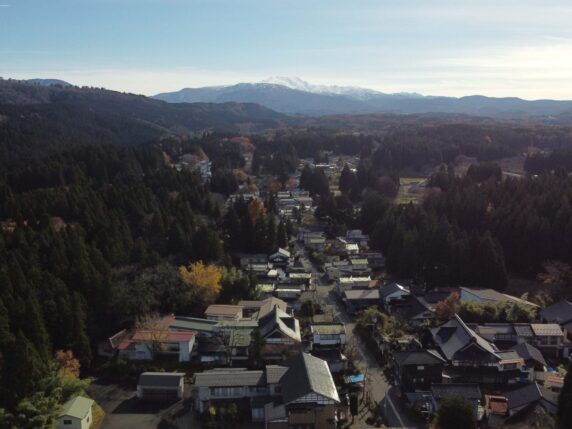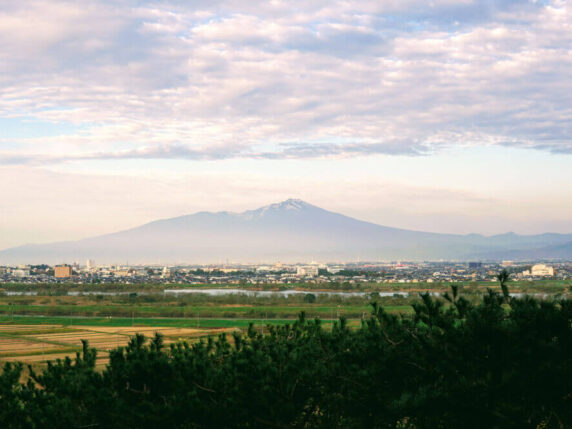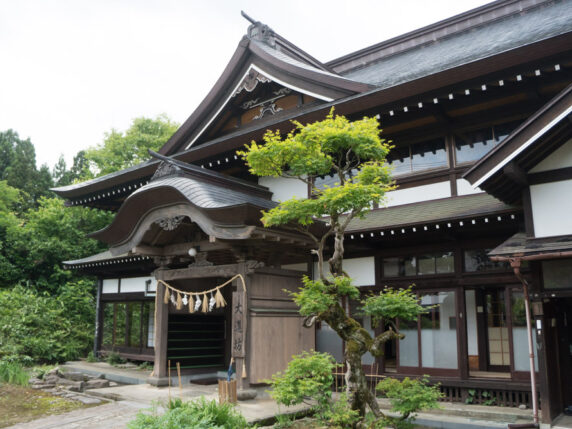Channel Matsuo Basho on the Dewa Sanzan
Written by Timothy Bunting
Channel Matsuo Basho on the Dewa Sanzan
On an early spring morning in 1689, Matsuo Basho awoke from his sleep in Bashoan, his residence in Edo, modern-day Tokyo. By that time, Basho’s fame as a Haiku and Renga poet had afforded him a life of luxury. Wherever Basho travelled, his apprentices treated him like royalty. Basho had come to feel that the luxury his fame afforded him was influencing his prose, the very thing that had made him famous in the first place. What was he to do? The only thing he knew to do of course, travel.
In Basho’s time, travel was truly unpredictable and often led people to their grave. However, travel had held a very special place in Basho’s heart from a young age. Basho was born the sixth child of a Samurai family said to be descended from the famous Taira clan, yet the death of his master led him to wander all around Japan in search of inspiration. Before long, Basho became known as a wandering poet. Travel had also heavily influenced some of his most esteemed poets. The poetry greats Basho looked up to such as the Japanese Saigyo and Sogi, and the Chinese Du Fu and Li Bai, all used travel as a source of inspiration, and all four passed away while on the road. For lifelong traveller Matsuo Basho, the journey was all that there was.
‘Life, itself, is a journey’. – Matsuo Basho

Deeper Ventures
But this time, Basho knew he had to travel further than ever before. To a land where none of his apprentices would offer him the luxury that he felt he didn’t deserve. Matsuo Basho had heard rumours of the elusive Oku, the Deep North, a land that marked the border between the ethnic Japanese and the indigenous Emishi tribes that still lived following the philosophies of old.
‘Seek not to follow in the footsteps of wise men of old, but seek what they sought.’ –Matsuo Basho
And so, on that cold spring day when Mt. Fuji showed its face over the burgeoning city of Edo, Matsuo Basho set off with his trusted companion Kawai Sora. And it was a good thing he did. What emerged was a masterpiece that would epitomise 17th century Japan and influence not only Japanese literature, but literature the world over; Oku no Hosomichi, The Narrow Road to the Deep North and Other Travel Sketches, a travel diary and collection of poetry claimed to have been written by the very soul of Japan. And the most important discovery of this travel is attributed to the Dewa Sanzan itself.
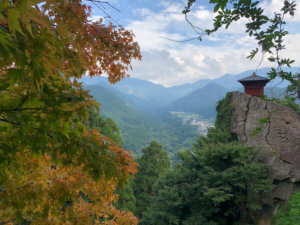
The Journey North Begins
Tears flowed from those who had gathered to bid Basho and Sora farewell. To ease their pain and reiterate that all things must pass, Matsuo Basho left the following Haiku:
As the spring passes,
A bird in song, or a fish
Tears full of sorrow
After a visit to Toshugu Shrine in Nikko, on the 20th of April Matsuo Basho and Sora reached Shirakawa in Fukushima prefecture. Matsuo Basho finally felt his journey to the deep north had truly begun. From Shirakawa, the pair travelled to Sendai, Matsushima, and Hiraizumi but not before the locals enticed them to visit Yamadera, a picturesque mountain temple hanging on the precipice of a cliff founded by Jikaku Daishi in 860. Here Matsuo Basho found inspiration for the Haiku that succinctly encapsulates the essence of the Japanese:
the utter silence …
piercing through the very stone
a cicada's rasp
Matsuo on The Mogami
The pair spent three days in Oishida waiting for good weather to sail the Mogami river, the longest river in one prefecture in Japan, heading to the Dewa Sanzan. There they stayed with poet Takano Ichiei and held a poetry contest. Taken aback by the strong current of the Mogami river, Basho composed:
Gathering the rains
Of summer, how swift she is –
Mogami River.
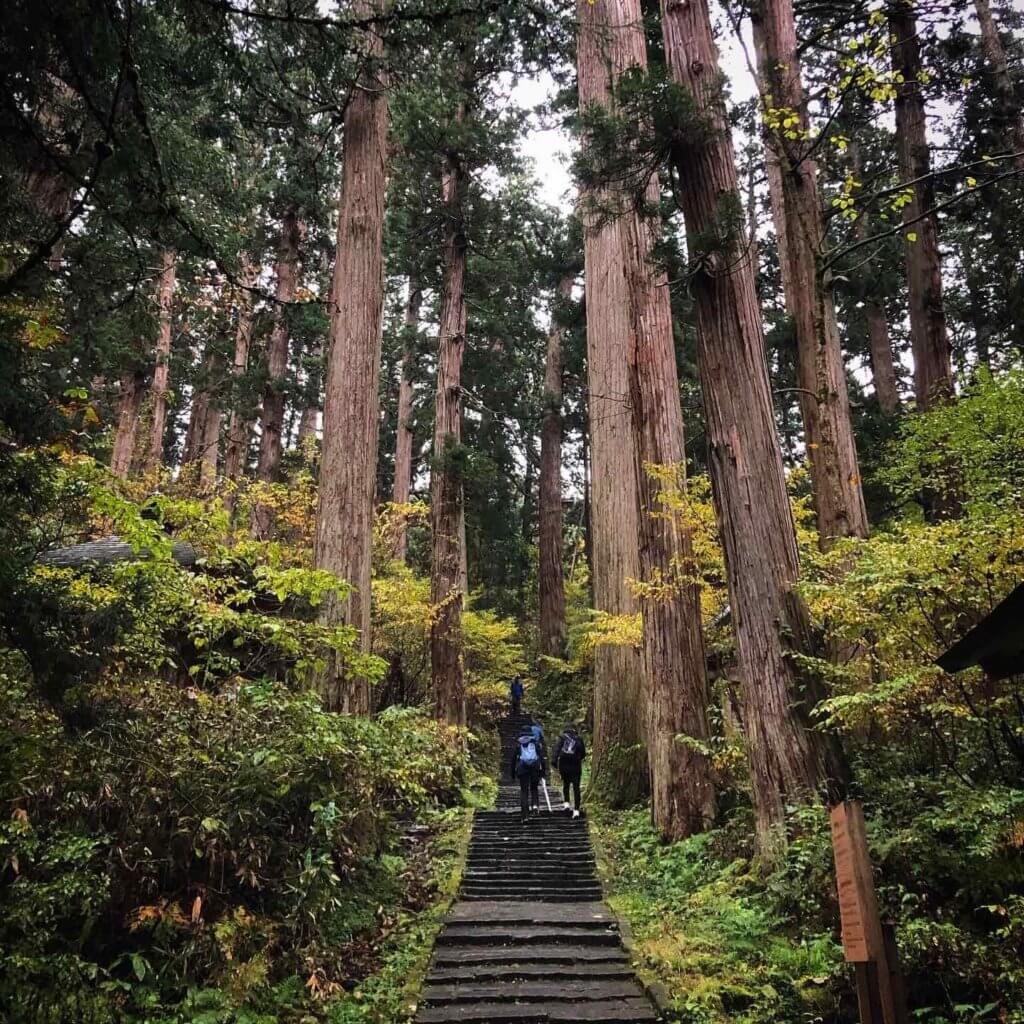
Matsuo Basho Encounters The Dewa Sanzan
After arriving at the Kiyokawa checkpoint on the 19th of July, the pair climbed Old Haguro Road to Toge on Mt. Haguro. Here they called on Rogan Zushi and gave him an introduction letter from Takano Ichiei who they had met in Oishida. Rogan led the pair to Minamidani, then home to a very large branch temple where they stayed and also visited the main temple at the top of Mt. Haguro. Basho apparently ate Dewa Sanzan Shojin Ryori Ascetic Cuisine at Kezoin Temple, now known as Saikan, as well as visiting the Five Story Pagoda.
The Philosophy that Defined a Generation
When Basho visited Minamidani, he had an epiphany. Basho had stumbled across a philosophy that would define Haiku poetry from that point onwards; Fueki-Ryuko (不易流行). Fueki-Ryuko is the principle of fluidity and immutability. By describing the phenomena of nature that changes with the seasons, Haiku poetry encapsulates the interchange of the transient and the immutable.
Oh how wonderful
The snow encapsulated
Echo of the wind
On the fourth day, at the recommendation of head priest Egaku, the pair donned the white Shime necklaces and Hokan headpieces of the Yamabushi (mountain monks) and followed a Yamabushi guide up Mt. Gassan. They arrived at the summit at twilight and slept in a straw hut on bamboo grass mats. That night the moon shone brilliantly in the sky. Basho learned exactly why Mt. Gassan was named 'the mountain of the moon'.
Clouds at the summit
How many have crumbled on
Mountain of the Moon
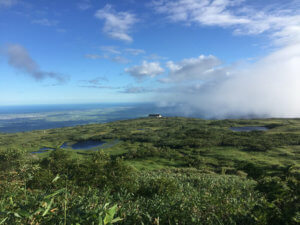
The Shrine Deep in The Dewa Sanzan
Awakening on their bamboo grass beds at dawn, the group set off for the most sacred site on the Dewa Sanzan, Mt. Yudono, or the “Shrine Deep in the Dewa Sanzan”. The sacred Mt. Yudono has an age-old rule forbidding mention of the object of worship, however Matsuo Basho was struck by its mystery.
The unspeakable,
sleeves wet at Mt. Yudono,
by the mountain foot

Onwards to Oku
After visiting Mt. Yudono, Basho and Sora summited Mt. Gassan with their guide and climbed back down to Minamidani. Boarding the Mogami river once again, the pair headed towards the port city of Sakata. At that time, Sakata was the main port for the burgeoning rice and safflower trade on the Mogami river, and was one of the main providers of rice to Edo on the Kitamaebune ships. Basho was still yet to reach Oku, the Deep North, but his goal was in sight. From Sakata, Basho travelled north and spent a night in Fukura before he arrived in Kisakata. Basho had officially entered Oku, the Deep North. When the pair arrived, Kisakata was shrouded in rain clouds that reminded Basho of Seishi, one of the Four Beauties of China. Inspired, Basho composed:
Kisakata rain,
Seishi lays asleep by wet
Mimosa flowers
Matsuo Basho's Journey of a Lifetime Concludes
After reaching their main destination, the pair visited Sakata and stopped at Oyama, Atsumi, Murakami, and Etchu on their journey home to Ise. The 2,400km journey took Matsuo Basho and Sora Kawai 156 days to complete, but it took a further five years of work until Oku no Hosomichi, The Narrow Road to the Deep North was published. This hard work has truly paid off with the travel diary since becoming a quintessential piece of Japanese literature.
Learn more about how you can follow in the footsteps of Basho with a Dewa Sanzan hike. Although it won't be like the straw huts Basho stayed in during his journey, the Shukubo of Mt. Haguro are a great option for accommodation. Last, if you need help in getting here, read our guide on how to access the Dewa Sanzan. Or perhaps you're after more reasons to add the Dewa Sanzan to your bucket list? You can see a map of Matsuo Basho's journey here.
References:
Biography.yourdictionary.com on Matsuo Basho
On the Path of Poets and other articles by the Japan Times
This article in Cradle Magazine
Poetry translated by the author Timothy Bunting
Timothy Bunting
Tim Bunting is a Dewa Sanzan Shrine Yamabushi with over 10 years' experience living beneath the three mystical peaks. He is a self-professed Dewa Sanzan nerd, and is currently working on the Yamabushido project and Dewa Sanzan Monzenmachi Project with Megurun Inc. His roles including assisting in Yamabushi trainings, translating, interpreting, and curating Dewasanzan.com.
Insider information and updates on
The Dewa Sanzan.
Subscribe to the Dewa Sanzan Tribe now.

